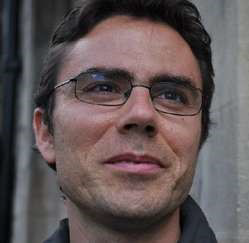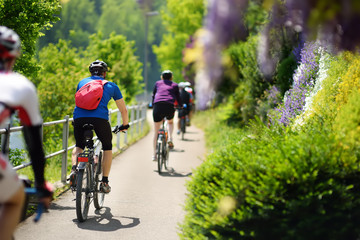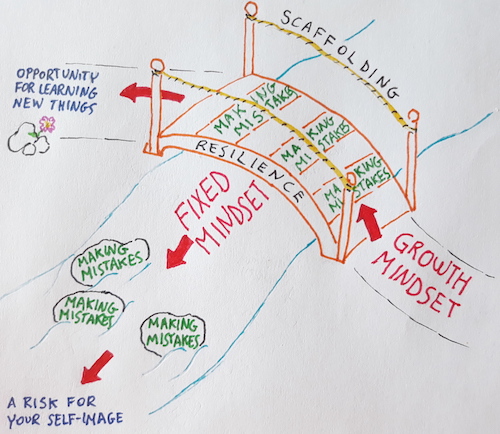Balance in Movement
Gianluigi Basile is a primary school teacher at IC Franco Marro Villar Perosa. He is interested in the CLIL approach, EAS method and new technologies. He has written a unit plan for the Italian magazine “Essere A Scuola” and the article “CLIL and EAS for innovating” for HLT and published also in Global EAS. Current professional interests are in changing our role as teachers. He also enjoys working with other schools within European projects. Email: indirizzoelettronico@yahoo.it

"Two roads diverged in a wood, and
I took the one less travelled by,
And that has made all the difference."
(from The road not taken by Robert Frost)
Introduction
I am a 42 year old Italian primary school teacher. Throughout my career, I have explored the implications of asking, researching and answering my question, ‘How do I improve what I am doing in my professional practice?' (Whitehead, J. & Huxtable, M., 2015).
I have been working as a primary teacher for 14 years. I started this job after working in different fields. Moreover, I strongly believe that such experiences outside the school are important since we as teachers have to prepare children to live in the “real world”.
As the quotation by Robert Frost above suggests, here I want to reflect on the values that move our and our children’s decisions and actions, with a living theory approach (Hymer et al. 2009). As I believe that we as teachers need to make a great deal of effort in order to change our approach in a school which needs to develop within a society in continuous transformation.
My focus is on reflecting on the elements which make a contribution to encouraging young learners, in my lessons in a primary school, to make meaningful and educational uses of a second language. The main focus is on the educational influences in learning. I use the C.L.I.L. approach and the E.A.S. method in lesson plans and practices that focus on the competences involved in educational influences in learning.
E.A.S. (“Episodi di Apprendimento Situato” - “Situated Learning Episodes”) method offers a framework for planning a short and meaningful activity and claims the relevance of planning lessons that have a “modelling” value so that they could be suitable to provide children with those competences they can apply in different contexts. The idea of this way of thinking about the lesson refers to the flipped lesson's logic and the didactic practices of authors such as Freinet and Don Milani (Rivoltella, 2018).
C.L.I.L. (Content and Language Integrated Learning) approach provides the opportunity to make children use the second language for discovering relevant topics working on multiple cognitive skills, fostering the use of the higher-order thinking skills (Mehisto, Marsh, Frigols, 2008 and Ball, Kelly, Clegg, 2015).
My values: riding a bicycle

It is like going on a bicycle. We have to find a balance among many elements. But to do that it is essential to move. We as teachers have to keep moving in the sense that we have to continue questioning ourselves and adapting according to the children’s needs in a society which is in movement as well. Moreover, we have to guide our pupils to become able to ride their own bicycle or as the scouts would say, their own canoe.
How to start finding this balance? I think taking the most demanding road or the one less travelled by. That is because to find a balance we have to lose it; we have to take risks. Overall, I will start here by declaring my values.
Talking about that I cannot help to think of an experience in Denmark where I did a job shadowing (within an Erasmus+ project). There I saw children working on the creation of their projects to create models of houses. They were free to use their own creativity choosing the material they needed. The teachers who followed them let them present their works (in progress) without limiting them. In other words, their focus were on the children’s process rather than the product. Basically, that was evident in the teachers’ feedback like: “that’s a good thinking” rather than “well done”.
I believe that the children are by their nature curious and willing to discover. We as teachers risk blocking that. We have to take seriously into account their thoughts; we have to look at them in the eyes! That is why it is so important to talk less and even for other three reasons.
First, it is essential to talk less because we have to expose ourselves and the children to different points of view. That is the key to having a more accurate comprehension of a phenomenon. If I stay stuck in my views, I will always see just a partial aspect of something but never the real thing itself.
Secondly, talking less in order to allow children to discover at their pace.
“Don't impose on me what you know,
I want to explore the unknown
and be the source of my own discoveries.
Let the known be my liberation, not my slavery.”
(from ‘A student's Prayer’ by Humberto Maturana)
“Deeper understanding is built slowly over time. Resist temptation for young students to discover everything there is to know about a topic all at once.
Their learning will progress throughout their formal and informal education as life-long learners”. (Derosa and Abruscato, 2015: 36). We as teachers have the responsibility to create the foundation because this approach can be developed.
Thus it becomes essential an approach based on discovery: “When we teach with the focus on discovery, we prepare children to make their personal discoveries with our guidance. We give them their very own “tool packs”. And with any luck at all, they will use those tools in a variety of contexts all through their lives”. That is why it is essential to choose the modelling contents as said previously within the EAS method.
Moreover, “discovery suggests that we need to respect and value the learners and their role in developing understanding.[…]. Teachers play an essential role in providing experiences that guide children to construct their own understanding. In this respect, discovery learning is a constructivist strategy. Watch as a teacher guides his students on the path of discovery.” (Derosa and Abruscato, 2015: 36).
In this instance, I had the chance to take part in an Erasmus plus project called ICEPELL-Intercultural Citizenship Education through picture books in early English Language Learning. This experience made me work on creating and experimenting with a kit to use a picture book to develop all the elements previously mentioned within the framework of the Intercultural education. I could work in an international team which made me develop my own in terms of collaboration and both educational and language competencies. In these activities we give the children all the time to enjoy and appreciate all the potential contained in a picture book creating a context in which they can gradually discover a variety of aspects making them emerge from the children themselves.
“Perhaps it is just human nature to tell people more than they really want to know. In any case, it happens when I get excited about the content I am sharing […]. I know that I will enjoy watching children discover something special on their own, and I know that it will happen only if I talk less […].” (Derosa and Abruscato, 2015: 36).
Finally talking less for having their feedback. I had the opportunity to deepen this aspect during my stay in Galway-Ireland thanks to a project planned by Silvana Rampone of my Regional School Office (Piemonte U.S.R. in Italia) in which I attended a course run by Peeter Mehisto and Tuula Asikainen. There we learnt the importance again of choosing well selected meaningful contents and instead of doing many things going rather deeper into the process and for instance dedicating time at the end of a lesson to asking children to write an “exit slips” where they can express freely (and anonymously) their opinions about our work and express their impressions. In this instance, it is essential that we as teachers have to “walk the talk” to create that sense of trust and a real cooperative and supportive classroom culture needed for an effective learning process (Mehisto et al. 2008), where to develop empathy and social-emotional skills with appropriate scaffolding. We have to give concrete evidence of our changes in the lessons. The children need to feel they are in a partnership!
My passions
In addition, I cannot help to talk about some of my passions: Science and English.
I choose to talk about these since I consider them to be connected to the topic of considering the different points of view. I am going to put it clear. The scientific method involved the research of different discoveries and it tastes all the hypotheses it is opened to the possibility of change perspective. And as for English, it is as each language a cultural point of view on our perception of the life. For this reason, each language is an enrichment of our way of expressing ourselves and receiving sensations. What links these elements together is the interculturality which has always attracted me. My first experience abroad had immediately touched me with the relations among different cultures, languages, origins and so on. I strongly believe in the benefits of getting used to and being familiar with diversities. It helps us think out of the box and approach life with a more positive attitude.
To paraphrase Dewey (2012) - American philosopher and pedagogist - progress in scientific research began when the use of different points of view on a topic was encouraged.
However, I have to say that experiencing “distant” realities often brings to notice things around us. Thus, I would like to highlight the really meaningful realities I bumped into here in Italy.
An emblematic example of a meaningful didactic approach I want to present can be found in Franco Lorenzoni's text “I bambini pensano grande” (“Children think big) in which an entire primary school cycle is documented based on the centrality of the personal point of view of each child.
Therefore, give the children the floor and dedicate the time necessary for this purpose. Of course, this will involve a careful choice of contents, favouring depth over quantity in accordance with cognitive psychology. For the latter, in fact, the purpose of the educational activity is not the quantity of notions but rather the depth.
We are therefore dealing with a rethinking of established habits that are at the expense of this approach. It is, therefore, necessary to privilege the problem-solving strategy that exposes children to a problematic situation by first asking themselves to seek a solution.
Another school reality that concretely interprets the concepts set out up to now is represented by the network of “Scuola Senza Zaino” (“School Without a Backpack”). Here the idea of enhancing the child's thought is realized with the creation, in each class, of the Agora; a physical space where pupils find themselves in a comfortable environment for dialogue. In short, I would also like to mention the emphasis that these schools also place in sharing the work plan with the pupils, that is, the topics they will address.
Lastly, I cannot mention all the teachers I worked with that carry on great eTwinning projects where make children cooperate and collaborate, making them real creators of their own learning.
Action research
To really change the learning-teaching process, I believe that action research offers a good deal of benefits but at one condition: it must consider the active role of all children involved in it.
Furthermore, I believe that scrupulous attention to every process activated in the pupil-pupil and pupil-teacher relationship is fundamental because it is precisely in the relationship that learning takes place, and small details can contribute to it decisively.
In addition, to stay on the subject of small tricks of great importance for the learning-teaching process, I would like to highlight how in the field of research, which is fundamental for every teacher, it is necessary to devote time to listen. This is intended for the students, as already argued in these reflections, but also aimed at understanding our educational action:
“A good listener is an explorer of possible worlds. The most important signals are those that present themselves as negligible and annoying, marginal or irritating: they are so because they are inconsistent with one's own certainties”(Frigerio, 2009).
Action research gets us into the use of making mistakes as an essential part of the process of teaching-learning. Thus, we can transfer that approach to our pupils. We have to provide the children with authentic tasks and make them work on the sense of responsibility with its original meaning: response+ability, therefore the ability to respond. This makes the pupils face their fear of making mistakes and getting the confidence (con=with fidence=trust) that will allow them to choose a response in each situation, putting into practice their own abilities. Eventually, they will be able to feel free to express themselves, relaxing in their discoveries.
To do that, we have to start from the values of each pupil. The educational relationship with our students has to enhance their sense of trust, recognising them as creators of knowledge.
Speaking of which I am also part of the M.C.E. (“Movimento di Cooperazione Educativa” - “Movement of Educational Cooperation”) and thanks to which we carry on a small investigation in our classes recording the activities phases focusing on the children’s thoughts when they face obstacles. This is a great chance to really change our approach to teaching.
Finally, engaging pupils in the research, they will be “more confident that the world outside of our school is listening, really listening to their message. And recognising that it is important” (Mounter, 2008: 6). We can do that by focusing on creating our and pupil's Grow Mindset as the opposite of a Fixed Mindset as I will explain in the conclusion.
Conclusion
GROWTH MINDSET-FIXED MINDSET

As shown in the drawing above, the value of making mistakes with a growth mindset is well expressed by Hymer et al. (2009:104): "When a person does something correctly, she's had a chance to practice something. When she makes a mistake, she's had a chance to learn something".
That is why it is essential to promote a growth mindset and it requires a variety of considerations that can be considered ordinary, but I think often might be neglected.
For instance: “Be very clear about what you intend to teach. If you are unclear about what you want the children to learn at the start, then your lesson will become increasingly more difficult to plan. It is like trying to button your shirt. If you miss the first button, then all the buttons are off.” (Derosa and Abruscato, 2015:62,63)
Moreover, appropriate classroom behaviour is not hard to achieve; it just requires creating an atmosphere of discovery that students want to experience.
(ibidem:74) And we have to get our pupils into use of describing the situations of study using an observation strategy such as systems analysis: (ibidem:77)
- identifying the elements (pieces)
- properties of the elements
- context or background space
- connections among the elements
Well, taking the most demanding road or the one less travelled by implies getting to grips with all these elements I talked about and it might appear really laborious. However, it is the most fascinating because generative of accomplished people.
Lastly, one more challenging thing: stop and stay. Our balance also needs the capacity to slow down giving value to our time living it, going deeper in what really matters.
References
Ball, P., Kelly, K., Clegg, J., (2015) Putting CLIL into Practice, Oxford: Oxford University Press.
Derosa, D. A. and Abruscato, J. (2015) Teaching children Science, USA: Pearson.
Dewey, J. (2012) Democrazia e educazione, Milano: Sansoni.
Frigerio, A., Esperienze di mediazione e cooperazione, www.icscopernico.it, Corsico, 2009
Hymer, B., Whitehead, J. and Huxtable, M. (2009) Gifts, talents and education: a living theory approach, UK: Wiley-Blackwell
Lorenzoni, F. ( 2014) I bambini pensano grande, Italy-Palermo: Sellerio Editore
Mehisto, P., Marsh, D. and Frigols, M. J. (2008) Uncovering CLIL, London (UK): Macmillan Education
Orsi, M. (2021) Uno zaino troppo pesante, Santarcangelo di Romagna (RN): Maggioli Editore
Rivoltella, P.C. (2018) Un'idea di scuola, Brescia: Editrice Morcelliana.
Whitehead, J. & Huxtable, M. (2015) 'Creating a profession of educations with the living-theories of master and doctor educators', Gifted Education International 32(1) 6-25.
Please check the Pilgrims f2f courses at Pilgrims website.
Please check the Pilgrims online courses at Pilgrims website.
Adaptive Teaching Methodologies in the Covid- 19 Era in Cuba
Adys Maria Nassiff Samón, Cuba;Silvia Miriam Morgan Scott, Cuba;Annia Rosales Romero, CubaBalance in Movement
Gianluigi Basile, Italy